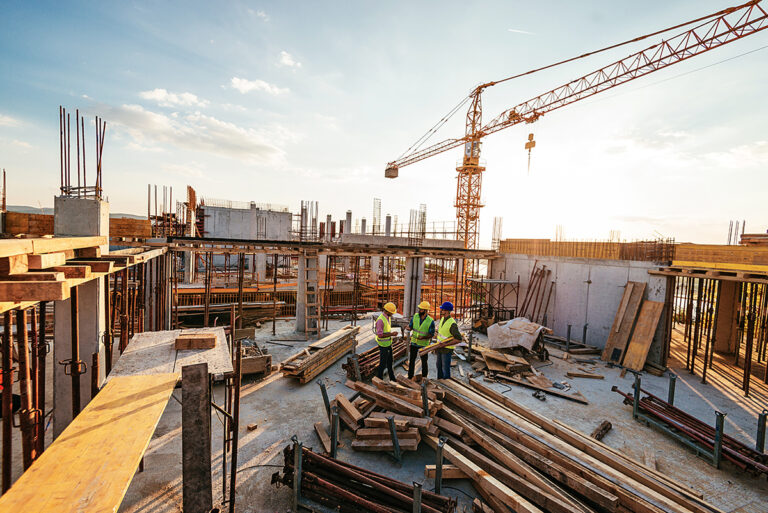Apocryphally, the phrase “may you live in interesting times” comes from an ancient Chinese curse. In the words of Sir Austen Chamberlain, politician, and brother of the British Prime Minister, Neville, “The curse has fallen on us…we move from one crisis to another. We suffer one disturbance and shock after another.”
There is no doubt that we live in “interesting times” right now, although whether that is a blessing or a curse is up for debate. We have some very strong headwinds as we enter the second half of 2022. The inflation rate in the US is heading towards double figures (8.6% in May) and hit a 40-year high recently. This may lead to what economists call a “cost of living crisis” which could auger a recession next year. In spite of this, the current economic situation is mixed, with unemployment still less than the number of job vacancies, and some industries seem to be weathering these headwinds with ease. The engineering and construction market is an interesting case in point. Although the supply of new homes has lagged the real demand for the past decade, a potential slowdown in spending will likely have a significant impact on the residential sector. The home building industry has recovered rapidly after the pandemic. Both residential and commercial builders face the same headwinds, but some are exacerbated.
Construction Industry in 2022
Firstly, both contractors and sub-contractors face hiring challenges. Many construction workers left the industry post-financial crash and then during the pandemic. Replacing them is certainly challenging. Secondly the well-publicized issues with supply chains, caused by both the pandemic and the Russian war in Ukraine, deeply affect the construction industry, given its dependence on physical materials. Thirdly, costs of building materials have risen 20.4% YoY and 33% since the start of the pandemic according to the Bureau of Labor Statistics (ref).
Despite all these challenges, the residential construction sector remains strong with a 27% increase in spending in 2021 compared with 2020. In the commercial sector, spending fell 11% for the same period, but a boost is coming from government investments in large-scale infrastructure projects (roads, bridges, rail, etc.). But, this is a fragile situation. If interest rates are raised significantly to rein in inflation, then borrowing becomes more expensive and that affects mortgages and house purchases. Let’s assume supply chain issues persist. In that case, contractors and sub-contractors alike will need to sharpen up their processes to improve efficiencies and protect margins that are under pressure across the AEC landscape.

Drive Efficiency with AI Technology
RSM, the accounting firm, in a recent post, highlights supply-chain concerns, inflation, and labor shortages as concerns for the AEC industry. RSM recommends that contractors (including subcontractors) prepare for any possible strengthening of these headwinds by, among other things, including price escalation clauses in their construction contracts.
The negotiation of construction contracts is one area where firms in the value chain can hedge and ensure tighter control over these headwinds. Main contractors and their subcontractors, for example, can construct better, more tightly controlled contracts, which reduce risks between them. Often these firms, especially subcontractors rarely have highly skilled legal staff to manage the complex redlining and negotiation processes to get to an executable contract quickly. That is not usually their area of expertise. Outside counsel can be engaged of course but that comes at a cost. By automating construction contract negotiations, companies can save cost and reduce the time to an executable contract. Creating a playbook of the ideal contract negotiation position and strategies for all types of contracts from NDAs, MSAs, Time and Material contracts to Lump Sum contracts, and then automating the contract review and negotiation process with the counterparty has enormous potential for cost savings. This is the bread and butter of what BlackBoiler‘s contract review software does for its clients in the AEC space. Playbooks can be rapidly built within the tool by learning from historical contracts, creating rules manually, and using a guided Q&A style playbook builder, allowing thousands of contracts to be automated redlined in 70% less time than manual review.
Take your Business to the Next Level
The outlook may be positive, but there is much that can be done to minimize further potential weakness. It starts with forward planning whether that be pre-ordering materials or tightening construction contracts to reduce risk.
Whether the times we live in are simply “challenging” or they are indeed, “interesting” probably depends on where you sit economically, financially, and politically. For those who operate in the AEC market, it appears to be more the latter than the former. Yes, there are challenges ahead but demand is clearly there and with a focus on efficiency, many contractors and subcontractors can navigate their businesses to a bright future.


